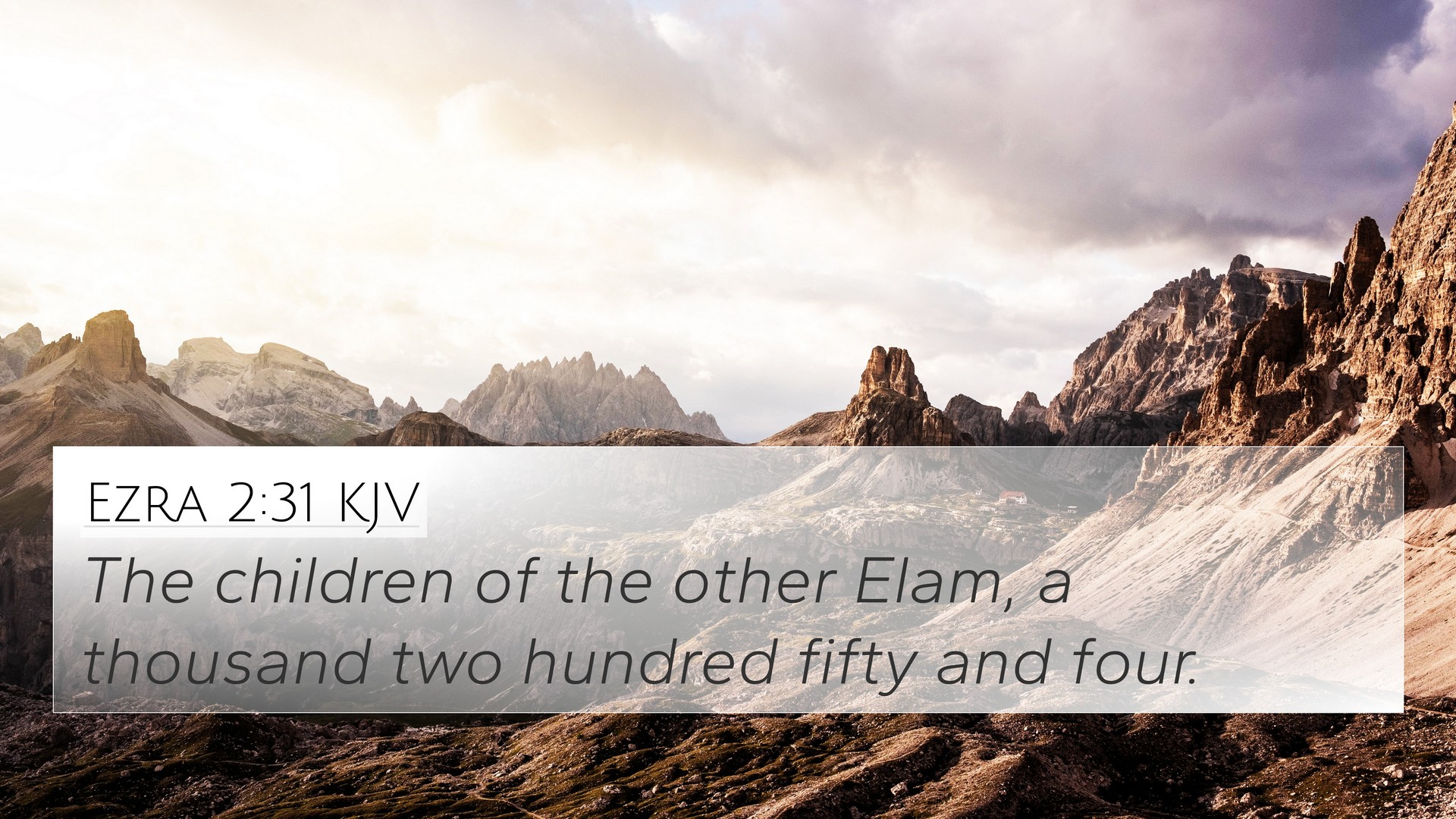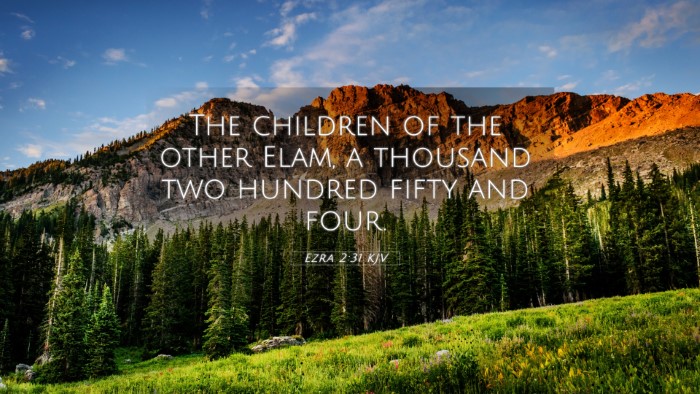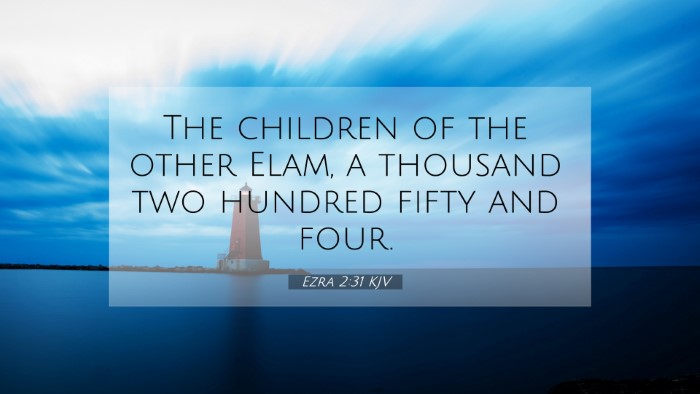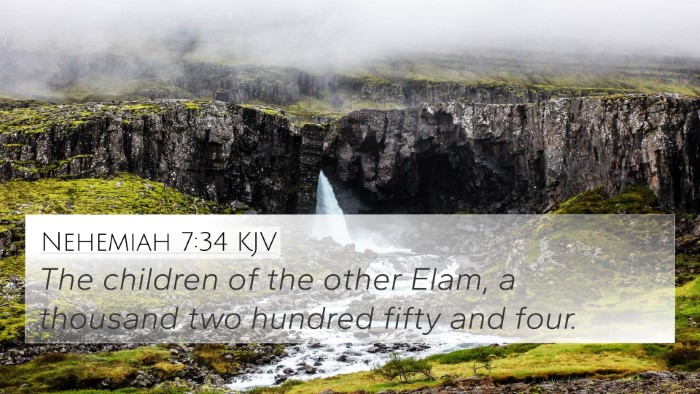Understanding Ezra 2:31
Ezra 2:31 states: "The children of the other Nebo, fifty and two." This verse is part of a larger passage detailing the return of the Israelites from Babylonian captivity and enumerating the families that returned to Jerusalem. The significance of this verse can be gleaned through various public domain commentaries, which offer insights into the historical context and theological implications of this census-like account.
Commentary Insights
1. Matthew Henry’s Commentary: Henry emphasizes the importance of the census and how it reflects God's providence. Each family listed is indicative of God's faithfulness in restoring His people. The mention of "the other Nebo" suggests a distinction that may imply particular significance for the descendants of this family.
2. Albert Barnes’ Notes on the Bible: Barnes points out the geographical and familial connections present in this verse. The children of Nebo were likely named after the mountain Nebo of Moab, which holds symbolic meaning in Israel's history, marking the boundaries of the Promised Land. These connections enrich our understanding of the identity and heritage of these descendants.
3. Adam Clarke’s Commentary: Clarke interprets the specific numbers given in this verse as a representation of the community’s full restoration. The returned families' listings serve not just as a record but as a testament to the hope and renewal following exile. Clarke also highlights the absence of specific mention of 'the other Nebo' which could point toward a historical nuance or distinction within the returnees.
Cross-References in the Bible
Ezra 2:31 presents several cross-references that enhance its understanding:
- Numbers 26:43 - A census of the tribes of Israel.
- 1 Chronicles 5:23 - The genealogies of the tribes that emphasize land ownership and heritage.
- Jeremiah 29:10-14 - God's promise of restoration following exile.
- Ezra 1:1-4 - The divine decree that initiates the return to Jerusalem.
- Nehemiah 7:6-73 - Another listing of those who returned, providing further context.
- Isaiah 43:5-6 - God's assurance of gathering His people from the east and west.
- Matthew 1:12 - A genealogy of Jesus that includes references to this theme of restoration.
Thematic Connections and Interpretations
The themes of restoration, identity, and divine faithfulness resonate through the verse and its cross-references. Notably:
- Restoration Theme: The return from exile is highlighted, echoing messages in Jeremiah and Isaiah.
- Identity of God's People: The genealogical records serve to remind the community of their heritage and shared faith journey.
- Divine Providence: Highlighting God's control over history, as seen in the numerous accounts of God's promises being fulfilled.
Conclusion on Ezra 2:31
In conclusion, Ezra 2:31 is not merely a census entry; it emphasizes significant themes in Scripture. It illustrates the connections between biblical narratives and highlights God's faithfulness in restoring His people. The numerous cross-references provide a deeper understanding of the implications of this verse and its relevance in the broader theological landscape.




